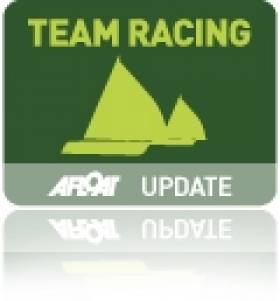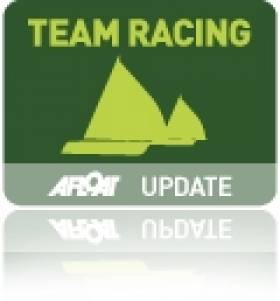Displaying items by tag: Rutland water
RYA National Team Racing Championship Won By Hoosiers
#teamracing – The Royal Forth Hoosiers (Tim Saxton, Rob Friend, Mark Powell, Isobel Walker, George Clark, Holly Scott) were worthy winners of the RYA National Team Racing Championship hosted by the UK Team Racing Association and Rutland SC on 21/22 March.
24 of the best team racing teams from across the UK were competing at the event, including the recently selected GBR squad for the forthcoming ISAF Team Racing World Championship, which is also being hosted by Rutland SC in July.
The competition started in a fresh, force 4/5 breeze on Saturday, necessitating the use of cut down mainsails on the fleets of 12–foot Firefly dinghies.
The first stage of the Championship consisted of four, seeded leagues, each comprising six teams. After 60 races, the fleet was reclassified for the second stage into Gold, Silver and Bronze leagues of eight teams.
The Championship was decided on the results of the second stage races that had been sailed. The Hoosiers were convincing winners, having not lost a race throughout the competition, and were presented the Prince Philip Trophy.
The next major team racing competition will be the Wilson Trophy (the unofficial British Open Team Racing Championship), which is being hosted by the West Kirby SC on the Wirral, near Liverpool, on the 8-10 May 2015.
More here
Irish 420 Dinghy Sailors Post Top Five Result at UK Inlands
#420 – Irish 420 dinghy sailors got the 2015 sailing season off to a great start with two top 5 results for Irish boats in the UK this weekend.
6 Irish 420s travelled to Rutland Water Sailing Club in Leicestershire for the 2015 420 Inland Championships.
For the UK sailors, this was the first in the 2015 Worlds and Europeans qualifying series, so racing was of a high standard in the two-day event, with a fleet of 49 competing.
Four races were completed on day 1 in sunny cold conditions with winds of 15 knots. Sunday was duller, and winds had dropped slightly, but an earlier start meant that the remaining three races of the series were completed.
UK youth pairing Clapp / Banham led from the beginning, but the Irish boats gave the home teams a run for their money, with Elmes / O'Sullivan (RCYC/HYC/MYC) finishing in second place overall, the UK's Burns / Shorrock and Davies / Keers in 3rd and 4th places, and RCYC's McCann / Whitaker taking 5th.
#teamracing – Located in central England near Leicester and Peterborough, the 2015 ISAF Team Racing Worlds will be held at Rutland Sailing Club on Rutland Water.
Following a bid process, the ISAF Team Racing Sub-committee made a recommendation to the ISAF Executive Committee who approved the choice of Rutland.
ISAF Competitions Manager Jon Napier said "Rutland Sailing Club has a strong team racing heritage and passion for the discipline. With an exceptional infrastructure in place we look forward to working with the Organising Authority to deliver a successful event."
The 2015 ISAF Team Racing Worlds are provisionally scheduled for July 2015.
































































